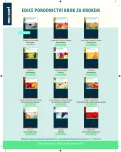Oral health status of women with normaland high-risk pregnancies
Authors:
P. Chaloupka 1; V. Korečko 1; Jakub Turek 1; V. Merglová 2
Authors‘ workplace:
Gynekologicko-porodnická klinika LF UK a FN, Plzeň, přednosta doc. MUDr. Z. Novotný, CSc.
1; Stomatologická klinika LF UK a FN, Plzeň, přednosta doc. MUDr. A. Zicha, CSc.
2
Published in:
Ceska Gynekol 2014; 79(1): 29-33
Overview
Objective:
The aim of this study was to compare the oral health status of women with normal pregnancies and those with high-risk pregnancies.
Method:
A total of 142 women in the third trimester of pregnancy were randomly selected for this study. The pregnant women were divided into two groups: a normal pregnancy group (group F, n = 61) and a high-risk pregnancy group (group R, n = 81). The following variables were recorded for each woman: age, general health status, DMF index, CPITN index, PBI index, amounts of Streptococcus mutans in the saliva and dental treatment needs. The data obtained were analysed statistically. The Mann-Whitney test, Kruskal-Wallis test and chi square test were used, and p-values less than 0.05 were considered statistically significant. The two–sided t-test was used to compare the two cohorts.
Results:
Women with high-risk pregnancies showed increased values in all measured indices and tests, but there were no statistically significant differences between the two groups in the DMF index, CPITN index and amounts of Streptococcus mutans present in the saliva. Statistically significant differences were detected between the two groups for the PBI index and dental treatment needs. In group F, the maximum PBI index value was 2.9 in group F and 3.8 in group R. Significant differences were found also in mean PBI values. Out of the entire study cohort, 94 women (66.2%) required dental treatment, including 52% (n = 32) of the women with normal pregnancies and 77% (n = 62) of the women with high-risk pregnancies.
Conclusions:
This study found that women with complications during pregnancy had severe gingivitis and needed more frequent dental treatment than women with normal pregnancies.
Keywords:
normal pregnancy – high-risk pregnancy – gestational diabetes – dental caries – periodontal disease – Streptococcus mutans
Sources
1. Agueda, A., Ramón, JM., Marnou, C., et al. Periodontal disease as a risk factor for adverse pregnancy outcomes: a prospective cohort study. J Clin Periodontol, 2008, 36, p. 16–22.
2. Barnes, GP., Parker, WA., Lyon, TC. Jr., et al. Ethnicity, location, age, and fluoridation factors in baby bottle tooth decay and caries prevalence of Head Start children. Public Health Rep, 1992, 107, 2, p. 167–173.
3. Bobetsis, YA., Barros, SP., Offenbacher, S. Exploring the relationship between periodontal disease and pregnancy complications. J Amer Dental Assoc, 2006, 137, p. 7–13.
4. Bogges, KA., Edelstein, BL. Oral health in women during preconception and pregnancy: implications for birth outcomes and infant oral health. Maternal Child Health J, 2006, 10, p. 169–174.
5. Featherstone, JD., Adair, SM., Anderson, MH., et al. Caries management by risk assessment: consensus statement. Calif Dent Assoc, 2003, 31, 3, p. 257–269.
6. Jeffcoat, MK., Geurs, N., Reddy, MS., et al. Periodontal infection and pretem birth. J Amer Dental Assoc, 2001, 132, p. 875–880.
7. Johnsen, DC., Gerstenmaier, JH., Schwarz, E., et al. Background comparisons of pre-31/2-year-old children with nursing caries in four practice settings. Pediatr Dent, 1984, 6, 1, p. 50–54.
8. Kelly, M., Bruerd, B. The prevalence of baby bottle tooth decay among two native American populations. J Public Health Dent, 1987, 47, 2, p. 94–97.
9. Kilián, J., a kol. Prevence ve stomatologii. 2. vyd., Praha: Galén, 1999, s. 162–174.
10. Kinane, D., Bouchard, P. Group E of European Workshop on Periodontology. Periodontal diseases and health: Consensus Report of the Sixth European Workshop on Periodontology. J Clin Periodontol, 2008, 35, 8, p. 333–337.
11. Marin, C., Segura-Egea, JJ., Martínez-Sahuquillo, A., et al. Correlation between infant birth weight and mother´s periodontal status. J Clin Periodontol, 2005, 32, p. 299–304.
12. Meurman, JH., Furuholm, J., Kaaja, R., et al. Oral health in women with pregnancy and delivery complications. Clin Oral Investigation, 2006, 10, p. 96–101.
13. Michalowicz, BS. Treatment of periodontal disease and the risk of pretem birth. New Engl J Med, 2006, 355, p. 1885–1894.
14. Mealey, BL., Rose, LF. Diabetes mellitus and inflammatory periodontal diseases. Curr Opin Endocrinol Diabetes Obes, 2008, 15, 2, p. 135–141.
15. Murray, PR., Rosenthal, KS., Kobayashi, GS., Pfaller, MA. Commensal and pathogenic microbial flora in humans. In Medical microbilogy. St Louis: MO Mosby, Inc., p. 78–87.
16. Offenbacher, S., Katz, V., Fertik, G., et al. Periodontal infection as a possible risk factor for preterm low birth weight.J Periodontol, 1996, 67, p. 1103–1113.
17. Einstein, P., Domoto, P., Wohlers, K., et al. Mexican-American parents with children at risk for baby bottle tooth decay: pilot study at a migrant farmworkers clinic. ASDC J Dent Child, 1992, 59, 5, p. 376–383.
18. WHO. Oral health surveys. Basic Methods. 4th ed. Geneva 1997.
19. Xiong, X., Buekens, P., Fraser, WD., et al. Periodontal disease and adverse pregnancy outcomes: a systematic review. BJOG Intern J Obstet Gynaecol, 2006, 113, p. 135–143.
Labels
Paediatric gynaecology Gynaecology and obstetrics Reproduction medicineArticle was published in
Czech Gynaecology

2014 Issue 1
Most read in this issue
- Non-neoplastic epithelial disorders of the vulva – lichen sclerosus
- Androgen insensitivity syndrome – case report
- Severe postoperative bleeding after Total Prolift procedure for vaginal vault prolapse – case study
- Comparison of hysterectomy techniques in a group of patient operated for the diagnosis female to male transsexualism
